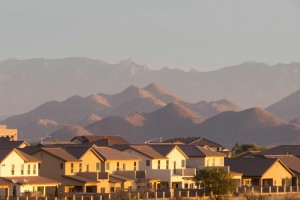
How we license facilities that provide substance abuse recovery resources
 In Arizona, there has recently been a large uptick in interest about “sober living homes” from the media, government officials, members of the community, legislative members, and law enforcement. Based on the questions we’ve received in our Division of Licensing, it is clear that there is a lot of confusion surrounding what sober living homes are, what other types of facilities may provide similar services, and the role the Arizona Department of Health Services plays in regulating these facilities.
In Arizona, there has recently been a large uptick in interest about “sober living homes” from the media, government officials, members of the community, legislative members, and law enforcement. Based on the questions we’ve received in our Division of Licensing, it is clear that there is a lot of confusion surrounding what sober living homes are, what other types of facilities may provide similar services, and the role the Arizona Department of Health Services plays in regulating these facilities.
To help clarify this information, we’ve put together a three-part blog series to help answer some of these fundamental questions about “sober living homes.” First, we will address the differences between licensed sober living homes and behavioral health residential facilities. The next part of the series will focus on the role ADHS plays in regulating these facilities. The final installment will provide resources available to Arizonans who have questions or concerns about residences that they believe may be operating as a “sober living home.”
Part One: The difference between a sober living home and a Behavioral Health Residential Facility
What is a sober living home?
Arizona has required sober living homes (SLH) to be licensed since 2019. However, the definition of a “sober living home” that requires licensure is fairly narrow. In order for a home to require licensure, it must provide a supervised setting to a group of unrelated individuals who are recovering from substance use disorders, and may provide activities that are directed primarily toward recovery from substance use disorders. Licensed sober living homes cannot provide any medical or clinical services onsite, except for tests to verify that the residents are not using alcohol or drugs.
When people talk about “sober living homes,” we find that they are often actually referring to a behavioral health residential facility (BHRF), which also requires licensure through our agency. A BHRF is a health care institution that provides treatment to an individual experiencing a behavioral health issue, including substance use disorder. BHRFs are required to provide behavioral health services onsite.
It is easy to see why people often confuse SLHs and BHRFs, as they have quite a bit in common. Both are often located in single-family homes, and both may serve residents who are recovering from substance use disorders. However, these licensees also have several key differences.
Since BHRFs are required to provide behavioral health services, they are usually eligible to receive reimbursement for those services through the resident’s insurance or the Arizona Health Care Cost Containment System (AHCCCS). Since SLHs are prohibited from providing medical or clinical services onsite, they are not able to bill insurance or AHCCCS.
Another key difference is the level of supervision at these homes. SLHs must have a manager who lives onsite. The manager is not required to be onsite at all times, but staff must arrive within 30 minutes if requested by ADHS. Since BHRFs provide treatment services and a higher level of care, they must have qualified staff onsite at all times. Qualified staff includes an administrator, behavioral health professional, behavioral health technicians and/or behavioral health paraprofessionals.
BHRFs are not the only type of homes often incorrectly labeled “sober living homes.” There are many other models where people offer rooms for rent that do not qualify as an SLH, even if the premises is alcohol-free and drug-free. For example, an “Oxford House” is a residence where a group of people live together and support each other in their recovery from substance use. However, since this model is peer-run, it does not provide the supervised setting that would require it to be licensed as an SLH.
The number of licensed SLHs and BHRFs has grown significantly since the bill requiring SLHs to be licensed was passed by the Arizona State Legislature in 2018. In January of 2018, there were 545 licensed BHRFs and 0 licensed SLHs. By January of 2023, the number of licensed BHRFs more than doubled to 1,106, and the number of SLHs had grown to 251. This trend has continued since January, as we’ve already received over 300 applications for new BHRFs in 2023, and over 500 applications for new SLHs.
Despite this growth, the ADHS staffing levels for those responsible for regulating BHRFs and SLHs has remained stagnant since the SLH program was implemented in 2019. Even with the increased workload, ADHS investigated 98% of high-priority complaints for BHRFs and SLHs on time in 2022. These high-priority complaints include those that may pose an immediate or serious risk to the health and safety of the residents, and they must be investigated within two to 10 days of receiving the complaint, depending on the severity of the allegations.
In the next installment of this blog, you will learn more about how ADHS regulates licensed BHRFs and SLHs. For more information about sober living homes and behavioral health residential facilities, please visit our website.

